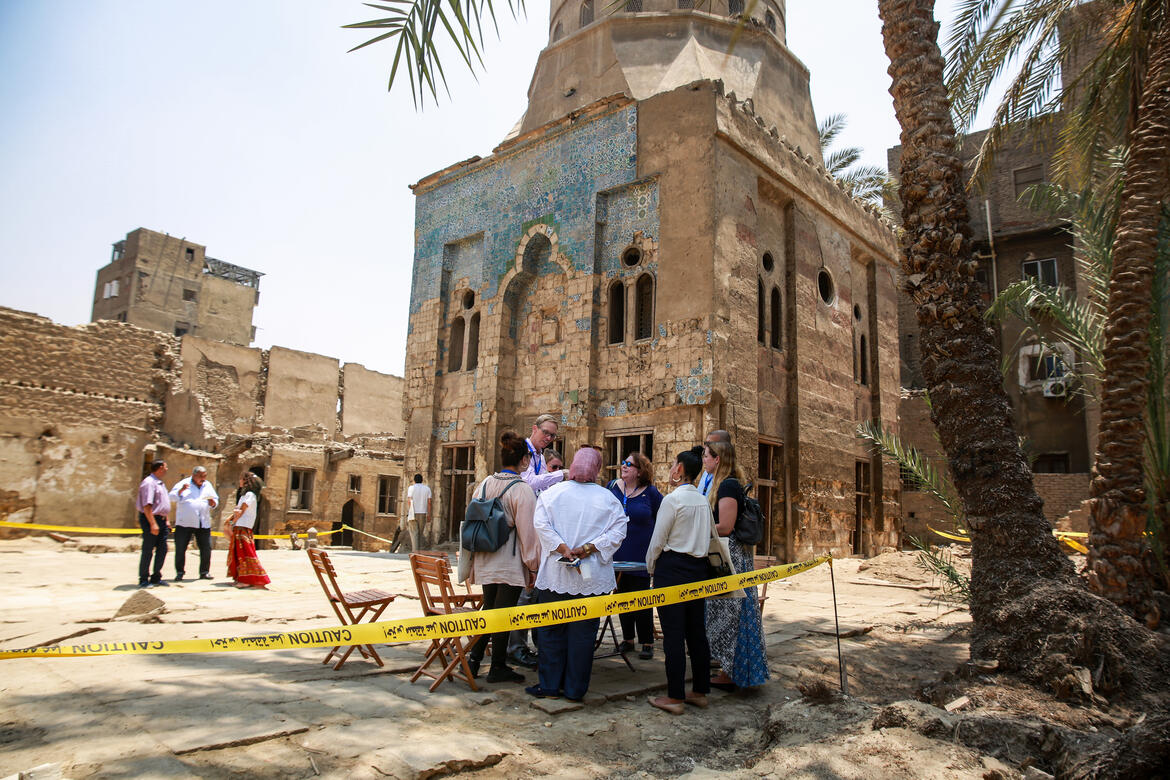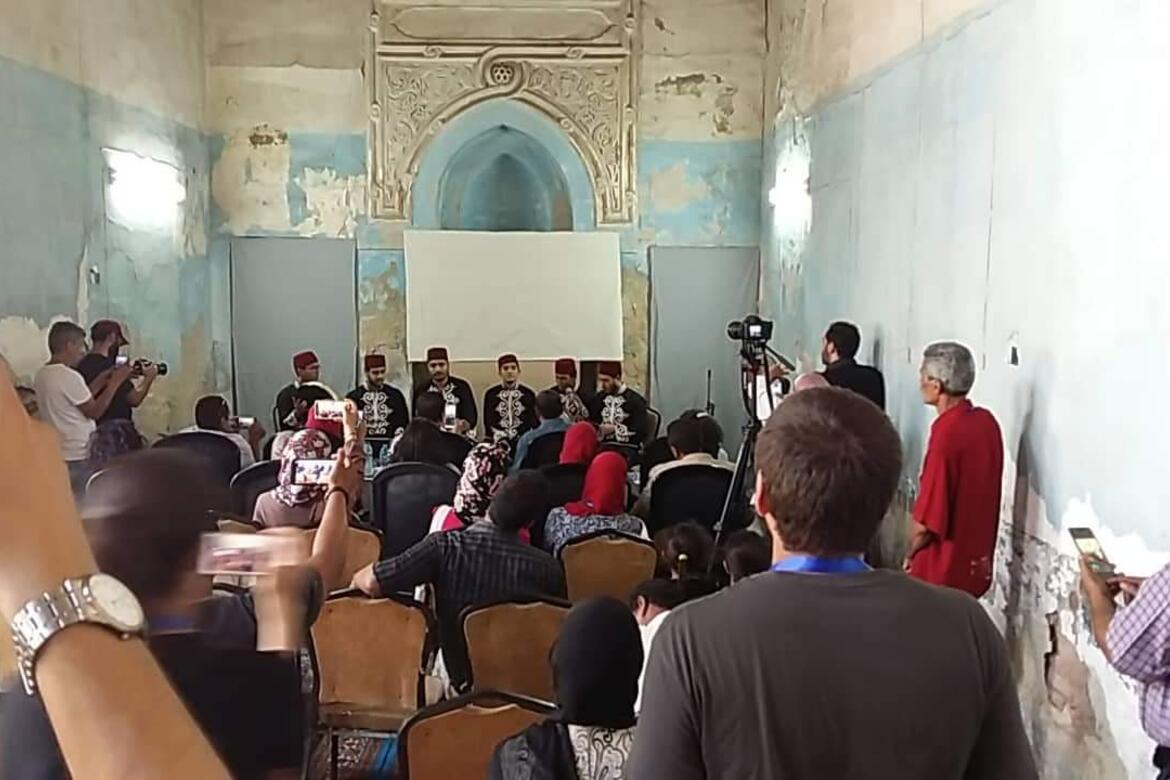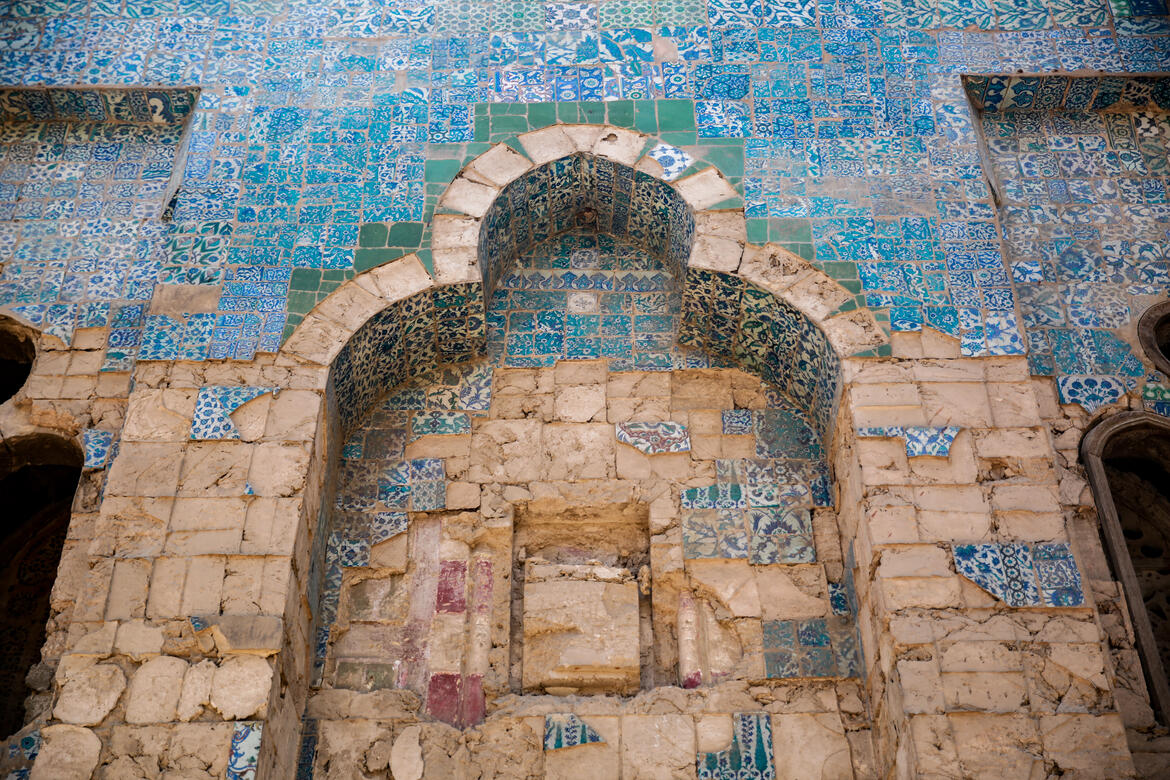Watch Day: Takiyyat Ibrahim al-Gulshani
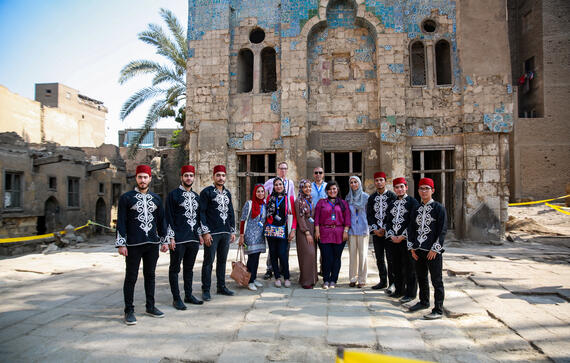
Earlier this summer, Takiyyat Ibrahim al-Gulshani hosted Watch Day, a successful community event involving potential stakeholders in a search to define the best formula for adaptive reuse and sustainability of the site. It also served as a coming-out party of sorts for our project, which officially began at the start of this year.
Watch Day brought together several possible collaborators, including representatives from the surrounding community, a local NGO, students, artists and the Egyptian Ministry of Antiquities (MoA). Importantly, Watch Day was not meant to provide answers. Instead, it sought to introduce the various participants to each other, and explore potential synergies that can develop into future conservation and preservation equations.

Several small and medium enterprise workshop owners were invited, and the event kept an open door policy towards any others who wished to join. Their presence sent a message about the kind of socioeconomics WMF intends to build into the physical intervention and adaptive reuse of the site. To demonstrate the multi-dimensional qualities of our thinking, Turath Community Group (TCG), a Gulshani project neighbor, also attended. Their co-director was joined by two of its female board members, both community activists, as a reminder of the importance of community input. Student groups from the Arab Academy for Science, Technology and Maritime Transport and Art Jameel, an Egyptian branch of the Saudi-London-based Princes School, presented different approaches. A sizeable delegation from the Egyptian Ministry of Antiquities’ local Darb al-Ahmar Inspectorate and Historic Cairo Office, as well as representatives from the US Embassy in Cairo were also in attendance, representing WMF’s important partners in the Takiyyat al-Gulshani project.
Watch Day activities unfolded in three modules, including introductions, presentations, and interchanges. Of importance for many was finding a future solution where the surrounding crafts economy is linked to the complex’s preservation.
Filmmaker Mostafa Naguib showed a short documentary movie about the site and its integrated relationship with the surrounding community. Neighbors, mostly owners of small businesses located around the takiya, spoke in the documentary about intimate connections to place based on close-knit relationships to the area going back three or four generations. In the film, people referenced their identity through a pride of place rooted in a historical connection to Takyyat al-Gulshani. We hope funds are found for Naguib to develop his video project into a more in-depth recording of the oral histories of the takiya.

Basma Khalil, an artist who runs a startup project called Tawriq (Road), was invited to the takiya. She was inspired by its spiritual environment to render some of its Islamic patterns onto her ceramic creations. Thanks to the MoA al-Darb al-Ahmar Inspectorate’s documentation team, she transferred Ibrahim al-Gulshani’s mausoleum tile designs onto ceramic forms such as decorative finger food dishes and table coasters. The dishes were given to some of the Watch Day visitors, and hand-made tiles were presented to the MoA documentation team and inspectors in thanks for their support.
Ibrahim al-Gulshani was born in Azerbaijan, so the day was also an opportunity for Saymor Nasirof, an al-Azhar University academic and the head of Azerbaijan community in Egypt, to speak about the sheikh’s sect and historical importance. Moreover, he expressed his thankfulness and happiness to have such a project that will change what he termed “the miserable condition of the takiya.”
Watch Day also served as a sneak-preview of things likely to come through for the project. Hayam Ahmed of the MoA al-Darb al-Ahmar Inspectorate documentation team presented their recently-completed project documenting the Gulshani mausoleum’s historic tiles. The project was also supported by WMF, which arranged and provided several training workshops for Ahmed’s MoA team. Using the new north elevation AutoCAD drawing by WMF’s Abeer Saed al-Din, Heba Hosny is up-linking the MoA database into GIS-based software. The resulting methodology established by the two groups will be the subject of an upcoming public presentation.
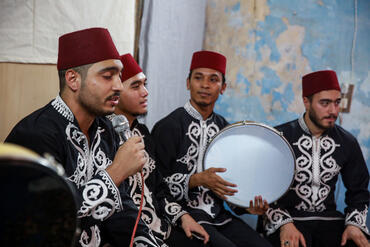
The day ended with a superb Sufi chant performance by al-Halaqa, a musical group whose name translates to mean “the ring,” composed of international students studying at al-Azhar University. Their moving and passionate performance was the perfect way to end an engaging and empowering Watch Day.

